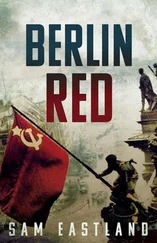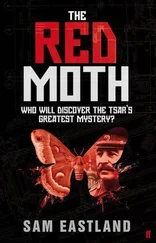Sam Eastland - Red Icon
Здесь есть возможность читать онлайн «Sam Eastland - Red Icon» весь текст электронной книги совершенно бесплатно (целиком полную версию без сокращений). В некоторых случаях можно слушать аудио, скачать через торрент в формате fb2 и присутствует краткое содержание. Год выпуска: 2014, ISBN: 2014, Издательство: Faber & Faber, Жанр: Исторический детектив, на английском языке. Описание произведения, (предисловие) а так же отзывы посетителей доступны на портале библиотеки ЛибКат.
- Название:Red Icon
- Автор:
- Издательство:Faber & Faber
- Жанр:
- Год:2014
- ISBN:9780571312313
- Рейтинг книги:3 / 5. Голосов: 1
-
Избранное:Добавить в избранное
- Отзывы:
-
Ваша оценка:
- 60
- 1
- 2
- 3
- 4
- 5
Red Icon: краткое содержание, описание и аннотация
Предлагаем к чтению аннотацию, описание, краткое содержание или предисловие (зависит от того, что написал сам автор книги «Red Icon»). Если вы не нашли необходимую информацию о книге — напишите в комментариях, мы постараемся отыскать её.
Red Icon — читать онлайн бесплатно полную книгу (весь текст) целиком
Ниже представлен текст книги, разбитый по страницам. Система сохранения места последней прочитанной страницы, позволяет с удобством читать онлайн бесплатно книгу «Red Icon», без необходимости каждый раз заново искать на чём Вы остановились. Поставьте закладку, и сможете в любой момент перейти на страницу, на которой закончили чтение.
Интервал:
Закладка:
Rather than simply remove the file, the entire desk had been transported from Tsarskoye Selo in the hopes that, contained somewhere within this finely constructed piece of furniture, there might exist some other document, in which the real names of the agents might be found. But no book decoding the names had ever been discovered. If such a thing had even existed, it was likely that the Tsar had simply burned it before his departure, leaving the unsolved riddle of the file to torment those who had toppled him from power.
Even though the Tsar’s Secret Service, the Okhrana, was gone forever, and the men who once worked for the Tsar had either fled the country or were dead, access to the Blue File was still restricted only to those who had been granted the express permission of Stalin. The reason for this was not so much to protect what the Blue File contained, but to keep hidden its very existence. The very fact that such a file had been created might have led people to wonder if there might be another such file, one kept in Stalin’s own hand, and hidden away from the world. Stalin knew, as did the Tsar before him, that the best secret was not one whose answer was kept hidden by the strongest lock and key. The best secret was one which nobody knew existed.
‘Did the Tsar make you aware of Detlev’s code name?’
‘No,’ admitted Pekkala.
‘Or even that he was on special assignment for the Romanovs?’
Pekkala shook his head.
Vosnovsky regarded him solemnly. ‘Then why . . . ?’ he began.
Pekkala fixed him with a stare.
Vosnovsky’s mouth snapped shut. Motioning for Pekkala to follow, he made his way down the aisles of cabinets until he came to a locked door. The door was made of metal, painted in the same grey colour as the walls, and was as solidly constructed as the door that led out to the street. The only difference was that it had no handle, only a lock, which meant that it had not only to be unlocked from the outside, but that anyone entering was then expected to lock themselves in. Rummaging in his pocket, Vosnovsky produced a large bundle of keys and fiddled with it for some time before he found what he was looking for. Then he slid the key into the lock. With a heavy clunk, the deadbolt slid back and the door slid open with a groan of its seldom-used hinges.
The desk was the only piece of furniture in the room, which had no windows or ventilation. It appeared to have been some kind of storage room, or else a workplace deliberately set aside from the main floor in the days when the Archive had been a foundry.
Vosnovsky walked around to the back of the desk, crouched down and slid out a large compartment which contained the file. He lifted it up on to the desk. The file comprised thousands of pages, each particular set of documents separated by a small tab containing the code word by which the individual agent was known. As Pekkala squinted at the tidy collection of manila folders, each one marked with the code names of agents likely long since dead or living far away in carefully maintained obscurity – Angel Wing, Aldebaran, Balalaika, Carousel – he recognised the Tsar’s handwriting, and even the faint blue colour of the pencil which the Tsar had also used to make margin notes in the sheaves of documents supplied to him each week by his parliament, the Duma. Suddenly, Pekkala paused. There, jammed in between Carousel and another agent, code-named Dromedary, he saw a crumpled collection of pages, with no folder or anything to mark the agent’s name. He lifted them out and placed them on the desk.
It was the contents of Detlev’s Okhrana file, clearly showing his arrest in June of 1910, incarceration in the fortress of Peter and Paul and then his release only one month later. But it was the reason for his arrest that caught Pekkala’s attention. In a raid on a guesthouse suspected of being the residence of a bomb maker named Kachalov, municipal police had come across a man, later identified as Detlev, in the act of creating a forgery. But this was not just any forgery. It was a study of a figure contained within Titian’s Burial of Saint Sebastian , one of the most famous paintings in the Tsar’s private collection. Although Titian produced many detailed studies of characters he later incorporated into his masterpieces, almost none were known to have survived. Upon interrogation, Detlev confessed that he was working for an art dealer named Kramer, who owned a well-known gallery in St Petersburg and who had furnished the Tsar with several paintings over the years. Well aware that a previously undiscovered canvas relating to the Burial of Saint Sebastian would prove irresistible to the Tsar, Kramer had commissioned the forgery, intending to make a small fortune off the sale. Having learned of Detlev’s arrest, Kramer left the country before police could track him down. But Detlev was sentenced to hard labour for a term of no less than twenty-five years, a length of time few prisoners survived. And then, quite suddenly, and only a few weeks later. Detlev found himself a free man, by order of the Tsar. There was no mention in the Okhrana report as to why the Tsar had ordered his release, but there, at the bottom of the page, faintly written in the Tsar’s own hand, Pekkala found the answer. It was a list of other paintings forged by Detlev. Among them, he saw Communion of the Elders by Crespi, and Rosa’s Court Musician , which he knew had been part of the Romanovs’ extensive art collection. As far as Pekkala knew, the true provenance of these paintings had never been revealed. According to the rest of the world, these paintings were all original. The only person left in Russia who knew the truth was Detlev. Having got word to the Tsar that the forgeries were part of his collection, Detlev had done what few men had ever been able to accomplish – he had struck a deal with Nicholas II. Detlev had traded his silence for freedom. In doing so, he had taken an extraordinary risk. The safest way to ensure a man’s silence was to have him put to death, something the Tsar could have accomplished easily, quietly and efficiently. If word had leaked out that the Tsar had paid such mighty sums for paintings that were worthless, it would not only have made him a laughing stock but would have cast his entire collection into doubt. So why keep the forger alive? The Romanovs must have seen that a man with such extraordinary skills might come in handy some day. In the meantime, the Tsar had kept him close at hand, as a priest in the Church of the Resurrection on his own estate. Detlev might have believed that he had put his past behind him, thanks to the benevolence of the Tsar, but the day had come when his old skills were needed again. With access to the original, something almost never granted to a forger, Detlev had created a near perfect copy. It was this forgery that Stefan Kohl had received that day on the Potsuleyev Bridge and which, years later, the Skoptsy had died trying to protect.
Pekkala thought back to the day when, with the stitches from his knife wound still new and painful on his forehead, he had gone to the Alexander Palace, to make his report to the Tsar. He recalled how the Tsar’s fingers had drummed across the top of his desk, this same desk on which Pekkala’s knuckles rested now. If Pekkala could only have reached into the drawer, he would have found the missing contents of Detlev’s criminal record, recently removed from Okhrana headquarters, perhaps by one of those same agents whose code names were listed in the file which lay before Pekkala now.
Whether or not it had been the Tsar’s idea, or that of the Tsarina, to begin secret peace negotiations with his enemies, the Tsar had nevertheless been drawn into it. To pay the Skoptsy’s asking price, he had played his role in the deception. And worse than that, the Tsar had stopped his own investigator from finding out the truth.
Читать дальшеИнтервал:
Закладка:
Похожие книги на «Red Icon»
Представляем Вашему вниманию похожие книги на «Red Icon» списком для выбора. Мы отобрали схожую по названию и смыслу литературу в надежде предоставить читателям больше вариантов отыскать новые, интересные, ещё непрочитанные произведения.
Обсуждение, отзывы о книге «Red Icon» и просто собственные мнения читателей. Оставьте ваши комментарии, напишите, что Вы думаете о произведении, его смысле или главных героях. Укажите что конкретно понравилось, а что нет, и почему Вы так считаете.










